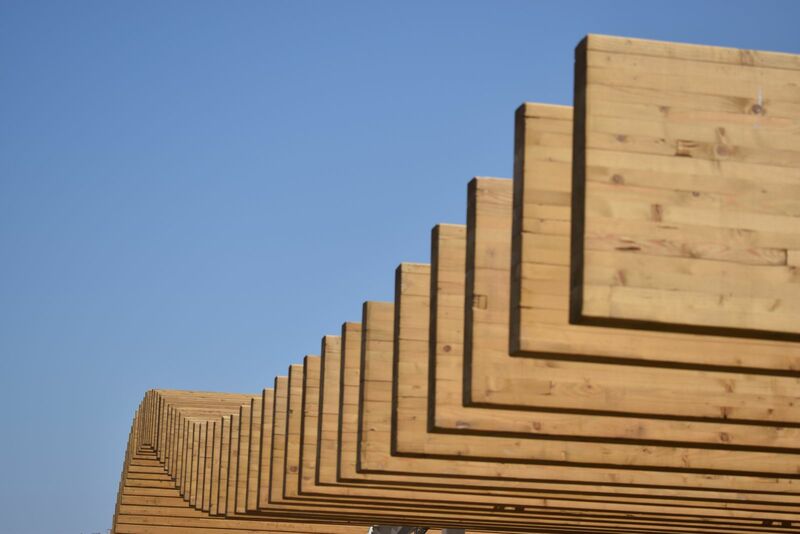
My most recent Barchart article on the lumber market was in mid-August. September physical lumber futures were at the $530 per 1,000 board feet level. In that article, I wrote:
Markets reflect economics and politics, and lumber is a sentiment barometer, given its penchant for extreme price volatility. Keep an eye on lumber’s price for clues about other markets, as the path of least resistance of lumber prices can be a leading indicator.
Lumber prices were slightly higher on November 17 but were not running away on the upside.
Trading around the $500 level and approaching a breakout level
Nearby January lumber futures traded around the $500 per 1,000 board feet level from late September through early November.

The chart highlights the bullish trend that developed from the October 25 $483 low that took lumber prices to the latest $545 high on November 17. Short-term technical resistance for the January futures is at the August 21 $556 peak.

The most recent continuous contract high was only $2 above the August peak of $543 per 1,000 board. Above there, the early 2023 high was at the $627 level.
Lumber prices tend to peak during the spring season
The demand for lumber for construction tends to peak after the winter as the weather improves and building increases. Since futures markets are always one step ahead of physical spot markets, lumber tends to rally as the spring approaches.
The physical lumber contracts began trading in 2022, so the old random-length futures provide a long-term picture of seasonal trends. The old lumber futures reached the first record high in March 1993 at the $493.50 level. In May 2021, lumber soared, reaching $1,711.20, and in March 2022, the high was lower at $1,477.40 per 1,000 board feet. As the holiday season approaches, markets are looking forward into 2024. The potential is high for rallies as next spring approaches.
Lumber can be a leader in the commodities asset class
The lumber futures market is highly illiquid, as the industrial commodity does not attract significant hedging or speculative volume. Open interest, the total number of open long and short positions in the lumber futures arena, remains at a low level compared to other industrial raw material markets.
Low liquidity causes extreme volatility in price trends. Upside price moves can cause offers to sell to disappear, while downside price action often comes without bids to purchase wood. Therefore, trends can lead to significant price moves to levels that defy rational, reasonable, and logical supply and demand fundamentals.
Meanwhile, lumber is a bellwether commodity that reflects economic conditions. Therefore, extreme price moves in lumber can portend bullish or bearish price action in other industrial commodities like energy or metals.
Open interest has declined- Not bullish
The new physical lumber futures contracts experienced open interest growth in 2022 and 2023.

The chart shows the rise to 9,020 contracts in late October. However, the metric has declined 32.4% to the 6,095 level in mid-November. In a futures market, declining open interest and rising price is not a technical confirmation of an emerging bullish trend. The decline in the total number of open long and short positions is likely a sign that hedgers and other market participants have closed risk positions during the most recent rally.
WY, CUT, and WOOD are lumber proxies
Lumber is highly illiquid, precluding any investment or speculative activity. I have been trading in the futures arena for over four decades and have never bought or sold one lumber contract because it does not offer the liquidity necessary for success. However, I watch lumber prices like a hawk for clues about the health and well-being of the economy.
When I develop a decisive view on the path of least resistance of lumber prices or wish to take advantage of seasonal price factors, I look to three assets that follow wood prices higher or lower.
- WY shares- Weyerhaeuser Company (WY) is a leading U.S. forest product company operating in the United States and Canada. WY operates as a real estate investment trust with exposure to lumber prices. At just above $32 per share on November 17, WY had an over $23.17 billion market cap. WY trades an average of nearly 3.6 million shares daily, making it a liquid stock. Meanwhile, WY’s $1.65 annual dividend translates to a 5.15% yield.
- The CUT ETF- The Invesco MSCI Global Timber ETF (CUT) tracks the MSCI ACWI IMI Timber Select Capped Index, holding the leading companies in the wood sector. CUT has an over 4.5% exposure to WY. At around $30.90 per share on November 17, CUT had $55.4 million in assets under management. CUT trades an average of 5,036 shares daily and charges a 0.60% management fee. CUT’s blended $0.78 dividend equates to a 2.5% yield.
- The WOOD ETF- The iShares Global Timber & Forestry ETF (WOOD) invests in companies related to the worldwide timber and forestry industry. At $76.50 per share on November 17, WOOD had an over $205 million market cap. WOOD trades an average of 9,555 shares daily and charges a 0.40% expense ratio. The $1.44 dividend translates to a 1.9% yield.
Lumber futures do not offer the critical mass necessary for risk positions. However, WY, CUT, and WOOD tend to follow lumber prices during rallies and selloffs and provide the requisite liquidity to execute purchase and sale orders with relative ease.
As the spring approaches, the odds favor the upside in the lumber futures arena. WY, CUT, and WOOD should go along for the bullish ride if lumber prices appreciate over the coming months.
On the date of publication, Andrew Hecht did not have (either directly or indirectly) positions in any of the securities mentioned in this article. All information and data in this article is solely for informational purposes. For more information please view the Barchart Disclosure Policy here.






